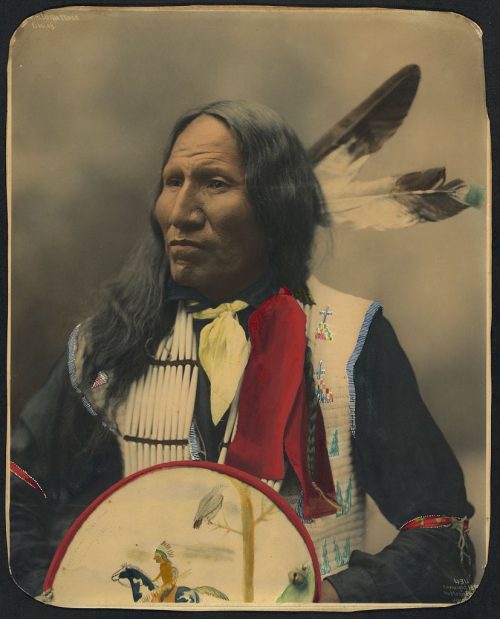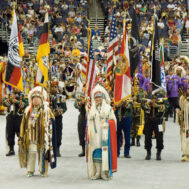Autumn 2017 has seen a wave of returns of Native American human remains and funerary objects from institutional collections to tribes across the United States for burial. It has been nearly thirty years since NAGPRA, the 1990 Native American Graves Protection and Repatriation Act, passed into law. NAGPRA requires consultation with Native American tribes when human remains are discovered in the course of archaeological digs or construction projects, but its key provisions enable tribes to request that human remains or funerary artifacts in the collections of institutions receiving federal funding be returned to the tribe. Unfortunately, the returns process is often complicated by uncertainty about the tribal origin of objects in museum collections, by lack of funding, and by the difficulty of meeting requirements for documentation by both tribes and institutions under the law. In consequence, although a high percentage of the human remains that have been cataloged under NAGPRA have been returned to tribes, only a fraction of the estimated 180,000 human remains in federal and museum collections have been processed.
The primary problem for identification is because remains were dispersed among museums and universities without proper documentation. A lack of historical records for the majority of objects that remain to be catalogued means that the process will slow even further. The best-documented materials have now been distributed back to tribes; what is left are the less-well-documented human remains.
Nonetheless, since 2015, the number of returned remains has more than doubled. National NAGPRA statistics state that since its passage in 1990 the following have been returned to tribes:
- Human remains: 57,847 individuals
- Associated funerary objects: 1,479,923 (includes many small items, such as beads)
- Unassociated funerary objects: 243,198 (includes many small items, such as beads)
- Sacred objects: 5,136
- Objects of cultural patrimony: 8,130
- Objects that are both sacred and patrimonial: 1,662
The largest numbers of human remains are held by the Smithsonian Institution and the federal Department of the Interior. The effort to return these has suffered considerably from the fact that NAGPRA was unfunded, with funds required for documentation and communication with tribes needing to be drawn from other, scant resources. In contrast, the Army Corps of Engineers dedicated funding to returns and has successfully completed physical inspections of all its sites, The Army Corps of Engineers developed a a much-emulated process for inventory, cataloguing, and documentation at its Center of Expertise for Archaeological Curation and Collections Management. The Center has been sought out to establish its procedures in other agencies, including the Department of Defense. The Government Accounting Office also named the U.S. National Forest Service and the National Park Service among the three most successful agencies dealing with NAGPRA requirements.
In late October 2017 in Macon, Georgia, the remains of 113 Native persons were returned to and buried by the Muskogee Creek Nation. 42,000 funeral objects and related artifacts were also returned and interred with the human remains in the area of the Ocmulgee National Monument. The remains had been excavated from a nearby site by an archaeological team in the 1930s, and afterwards dispersed, some going to universities, some to federal government storage, and some to museums, including the Smithsonian’s National Museum of the American Indian. It took nearly two decades for the tribe’s return request to be fulfilled, due chiefly to the Smithsonian’s stringent returns policy, which requires sometimes lengthy research into the provenance of any remains requested for return. As Raelynn Butler, Historic and Cultural Preservation manager for the tribe noted, “our histories are oral history and we can’t necessarily prove that we were in an area before contact, before written history … tribes have a hard time being able to prove or to prove in an empirical way that those remains are affiliated to us.”
Meanwhile, in Monterey, California, a reburial ceremony went forward in an Army Cemetery for the remains of seventeen Native people whose graves were dug up in the 1940s when the local Army base was built. Representatives of all six tribes who participated in the return appeal oversaw the re-burial ceremony in the Presidio of Monterey’s Army cemetery. The human remains had been dispersed and held by a number of local institutions since they were excavated.
The repatriation process was complicated by the fact that the prime mover in the campaign for their return did not have the legal authority under NAGPRA to receive the remains for burial. Louise Miranda Ramirez is the chairwoman of the Ohlone Costanoan Esselen Nation, but because her community is not a federally recognized tribe, she had to seek support from five other California tribes to proceed with the request for her own tribe. Ramirez, a longtime activist for Native interests, is also the only person in the region who responds to the consultation requests sent out to nearby tribes by companies or the city officials when human remains are uncovered in the course of construction projects.
A few weeks before, after a funeral service at the Russian Orthodox Church in Igiugig, Alaska, Yupik villagers re-buried the bones of twenty-four of their ancestors. The remains had been excavated in 1931 near the now-abandoned neighboring village Kaskanak, by an archaeologist from the Smithsonian Institute. As was the case for the Muskogee Creek Nation in Macon, Georgia, the return of the bones from the Smithsonian had been delayed by uncertainty. Here, the delaying issue was whether the people of Igiugig had the right to claim kinship with their ancestors from Kaskanak. However, after several years of research and consultation with the people of Igiugig, the Smithsonian released the bones for reburial.
Not all the returns of human remains this autumn were domestic. In November 2017, the State Museums of the Free State of Saxony in Germany worked through the Office of Hawaiian Affairs and the Native Hawaiian group, Hui Mālama I Nā Kūpuna ‘O Hawai’i Nei (Group Caring For the Ancestors of Hawai`i). Between 1896 and 1902, the remains of indigenous Hawaiians had been removed from burial caves in Hawaii, and subsequently sold to the Museum of Ethnology in Dresden and to Arthur Baessler, a patron of the museum. Since 2010, the Museum of Ethnology has been part of the Staatliche Kunstsammlungen Dresden (Dresden State Art Collections).
A Dresden ceremony to commemorate the repatriation on October 23, 2017 was attended by representatives of the Hui Mālama I Nā Kūpuna ‘O Hawai’i Nei, the German government, and the Dresden museums.
As reported in GW, Eva-Maria Stange, Minister of State for Science and Art of the Free State of Saxony stated at the formal returns ceremony that, “In Saxony, we have agreed that ‘human remains’, however they may have come to us, will be returned to those ethnic groups from which they originate.”
On the other side of the world, in Canberra, Australia, an elaborate returns ritual was performed in mid-November 2017. The remains to be buried included those of 104 aboriginal Australians formerly held by the National Museum of Australia, and the ‘Mungo Man,’ a 40,000-year-old skeleton. More than eighty members of the museum, university, and academic community, including Dr. Jim Bowler, who had first excavated the Mungo Man in 1974, were in attendance at the ceremonial return of the remains to the custody of the tribal representatives. Dr. Bowler donated the 8,000-year-old timber which was used to create the coffin for Mungo Man’s reburial. The vintage Chrysler Valiant hearse which would carry the remains was ritually purified with smoke before setting out on its long drive to the Willandra Lakes region for the reburial.
 Strikes-with-nose, Oglala Sioux Chief, Heyn Photo, Omaha, Nebraska
Strikes-with-nose, Oglala Sioux Chief, Heyn Photo, Omaha, Nebraska 

